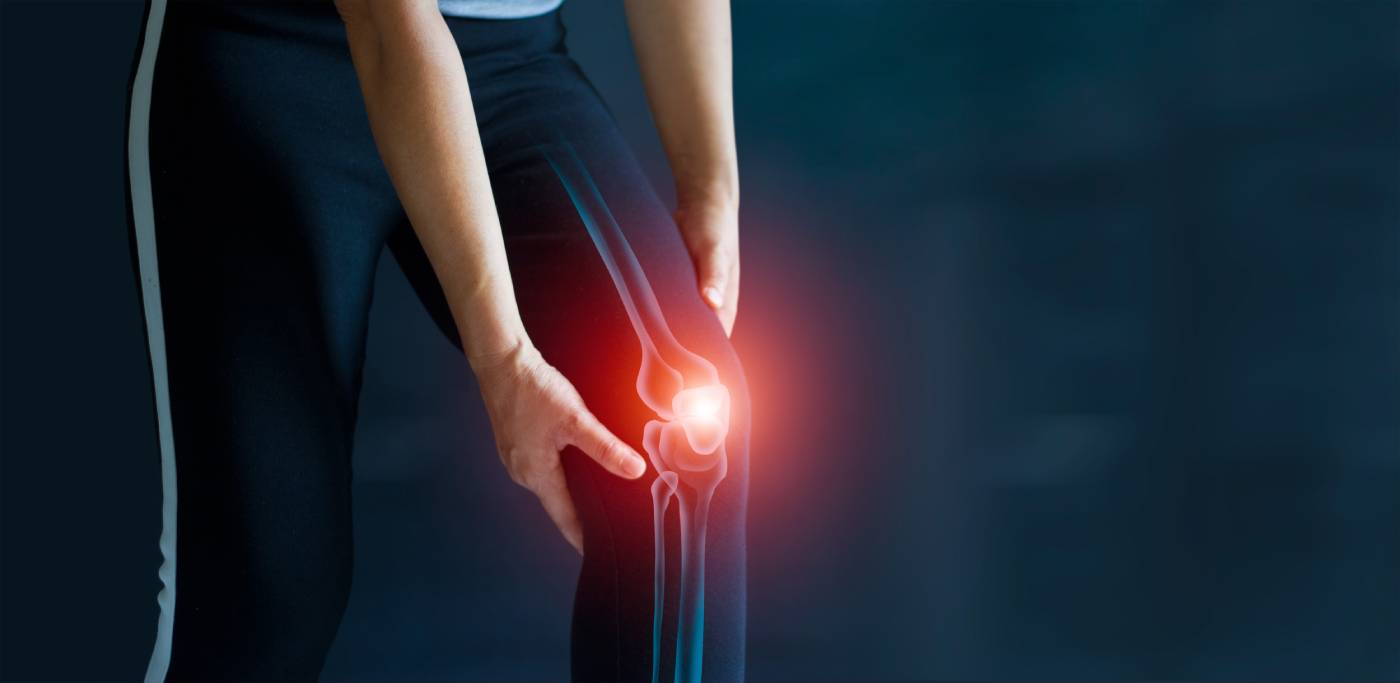Hyaluronic acid (HA) is a high molecular weight molecule naturally found in the cartilage and synovial fluid of the knee joint,1 where it chiefly serves as a lubricant and space-filler within the joint.2 Because of its useful characteristics, local HA injections into the knee joint has become a common treatment for knee pain caused by osteoarthritis (OA), with many preparations of injectable HA approved for clinical use.3 An early clinical trial by Bellamy et al. found that such preparations were effective treatments for OA of the knee, greatly improving both knee pain and function, though they cautioned that the differential effects of the many preparations of HA injections required further study.4 Moreover, both Bellamy et al.’s study as well as subsequent trials investigating the safety of specific HA drugs did not demonstrate any significant safety issues for patients receiving these injections.3,4
Despite the efficacy of intra-articular (IA) HA injections in resolving knee pain caused by OA, some concerns with the treatment have merited the study of alternative modes of HA administration in OA patients. Chief among these concerns is the fact that an IA treatment course necessitates regular visits to the hospital for the patient to receive a painful injection, which imposes not only a heavy mental burden on these patients but also a risk of infection. Furthermore, though HA injections have been shown, on average, to alleviate knee pain for patients with OA, significant heterogeneity in the therapeutic efficacy of these injections has also been observed, with some studies reporting only a small benefit.5
These considerations, among others, have brought clinicians and researchers to propose two alternative methods of HA administration for knee pain caused by OA. The first of these, which has already found clinical application, is oral HA administration. In oral HA treatment, HA is consumed in a decomposed polysaccharide form, which has been proposed to lead to anti-inflammationby binding to Toll-like receptor 4 and promoting interleukin 10 expression and cytokine signaling.4 Oral administration of HA imposes a much smaller burden on OA patients and has demonstrated some efficacy in treating OA-related pain.6 There has also been compelling clinical evidence to suggest that a combined oral and IA HA therapy may be even more effective in treating knee pain due to OA than HA injections alone; this would also potentially allow patients to receive the painful injections less frequently while still managing their OA symptoms appropriately.6
The second proposed alternative method of HA administration is still largely theoretical: the use of HA hydrogels. Barbucci et al. studied the rheological properties of a 50% cross-linked HA hydrogel and suggested that a similar HA gel could be injected into the knee in place of linear polysaccharide HA to provide a more effective and potentially longer lasting treatment.7 The spatial control afforded by certain types of HA hydrogels have also brought some researchers to propose that such gels could also be used to treat OA indirectly by serving as a growth scaffold for embryonic stem cells.3,8 These alternative HA treatments and methods of utilization are chiefly focused on developing a more reliably effective treatment for OA-derived knee pain that could also help alleviate the mental and physical burden associated with IA-only HA therapies.
References
(1) Altman, R. D.; Manjoo, A.; Fierlinger, A.; Niazi, F.; Nicholls, M. The Mechanism of Action for Hyaluronic Acid Treatment in the Osteoarthritic Knee: A Systematic Review. BMC Musculoskelet. Disord. 2015, 16, 321. https://doi.org/10.1186/s12891-015-0775-z.
(2) Ayhan, E.; Kesmezacar, H.; Akgun, I. Intraarticular Injections (Corticosteroid, Hyaluronic Acid, Platelet Rich Plasma) for the Knee Osteoarthritis. World J. Orthop. 2014, 5 (3), 351–361. https://doi.org/10.5312/wjo.v5.i3.351.
(3) Bowman, S.; Awad, M. E.; Hamrick, M. W.; Hunter, M.; Fulzele, S. Recent Advances in Hyaluronic Acid Based Therapy for Osteoarthritis. Clin. Transl. Med. 2018, 7 (1), 6. https://doi.org/10.1186/s40169-017-0180-3.
(4) Bellamy, N.; Campbell, J.; Welch, V.; Gee, T. L.; Bourne, R.; Wells, G. A. Viscosupplementation for the Treatment of Osteoarthritis of the Knee. Cochrane Database Syst. Rev. 2006. https://doi.org/10.1002/14651858.CD005321.pub2.
(5) Oe, M.; Tashiro, T.; Yoshida, H.; Nishiyama, H.; Masuda, Y.; Maruyama, K.; Koikeda, T.; Maruya, R.; Fukui, N. Oral Hyaluronan Relieves Knee Pain: A Review. Nutr. J. 2016, 15, 11. https://doi.org/10.1186/s12937-016-0128-2.
(6) Ricci, M.; Micheloni, G. M.; Berti, M.; Perusi, F.; Sambugaro, E.; Vecchini, E.; Magnan, B. Clinical Comparison of Oral Administration and Viscosupplementation of Hyaluronic Acid (HA) in Early Knee Osteoarthritis. Musculoskelet. Surg. 2017, 101 (1), 45–49. https://doi.org/10.1007/s12306-016-0428-x.
(7) Barbucci, R.; Lamponi, S.; Borzacchiello, A.; Ambrosio, L.; Fini, M.; Torricelli, P.; Giardino, R. Hyaluronic Acid Hydrogel in the Treatment of Osteoarthritis. Biomaterials 2002, 23 (23), 4503–4513. https://doi.org/10.1016/S0142-9612(02)00194-1.
(8) Hangody, L.; Szody, R.; Lukasik, P.; Zgadzaj, W.; Lénárt, E.; Dokoupilova, E.; Bichovsk, D.; Berta, A.; Vasarhelyi, G.; Ficzere, A.; Hangody, G.; Stevens, G.; Szendroi, M. Intraarticular Injection of a Cross-Linked Sodium Hyaluronate Combined with Triamcinolone Hexacetonide (Cingal) to Provide Symptomatic Relief of Osteoarthritis of the Knee: A Randomized, Double-Blind, Placebo-Controlled Multicenter Clinical Trial. Cartilage 2018, 9 (3), 276–283. https://doi.org/10.1177/1947603517703732.
